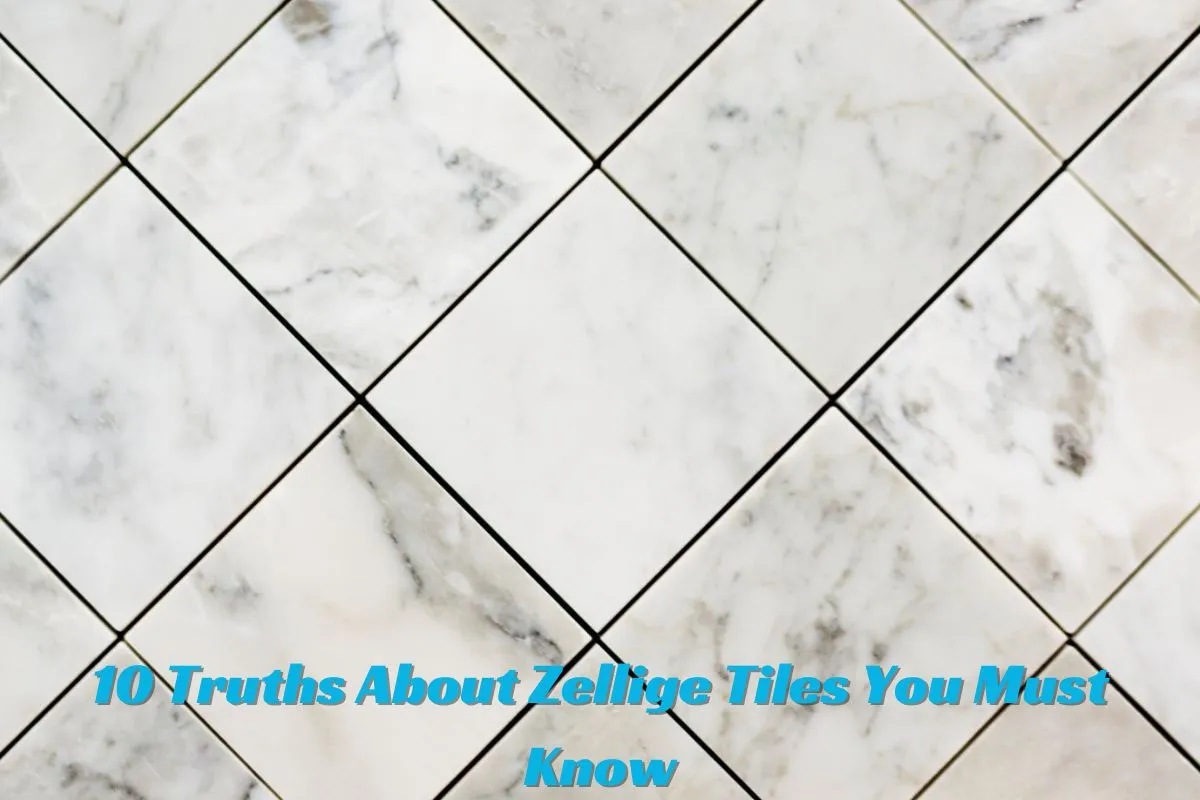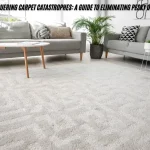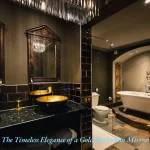- INTRODUCTION
Zellige tiles have become one of the most talked-about trends in home design. Their handmade charm, vibrant appearance, and Moroccan roots make them both unique and stylish. But before you jump on the trend, there are several things you might not know. This article uncovers ten lesser-known facts about zellige tiles, explained in simple English, so you can make an informed decision about whether these tiles are right for your space.
- ZELLIGE IS THE GREAT-GRANDPARENT OF SUBWAY TILE
Zellige might seem very different from subway tiles, but they are related. Subway tiles were first introduced in 1904 in New York City’s underground train stations, while Zellige has been used in Morocco since the 10th century. Both are fired and glazed ceramic tiles, but Zellige is handmade and much older. Despite the difference in looks and history, they share a similar foundation.
- IT’S A TRADITIONAL ART FORM THAT IS FADING AWAY
Making Zellige tiles is not just a manufacturing process—it’s an art that has been passed down from one generation to the next in Morocco. Craftsmen who specialize in this tile work are called maâlems. However, even though zellige is growing in popularity around the world, the skill of making it is slowly disappearing. This is partly because the process is so difficult and time-consuming. The tiles are made from special clay, usually found in Fez, Morocco. After being combined with water, the clay is sculpted by hand, let to dry, and then burnt in kilns that are frequently powered by olive pits. The tiles are then hand-glazed, one at a time. Morocco has strict rules about what counts as real zellige, such as requiring clay that is free from lime and iron because those can damage the tiles.
- NO TWO TILES ARE THE SAME
Zellige tiles are completely handmade, which means every single tile is a little bit different. Each one is molded, cut, and glazed by hand. A handmade zellige tile has a unique, artistic quality, unlike factory-made tiles that are all the same size and colour. These differences are part of what makes Zellige so special. When installed, the tiles create a surface that looks rich and full of character.
- CLEANING THEM CAN BE DIFFICULT
One of the downsides of zellige tiles is that they are not always easy to clean. Because the tiles are not perfectly flat, the surface may look wavy or rippled. The corners may stick out slightly, and the edges are often uneven. While this adds a lot of charm and texture to a wall, it also means there are more places for dirt to hide. Fabrics can snag on the rough edges too. So if you’re planning to use Zellige in a kitchen or bathroom, be aware that they will need a little more effort to keep clean.
- DON’T EXPECT A PERFECT COLOUR MATCH
Zellige tiles are famous for their color variety. Even if you choose all the tiles in the same color, they won’t look exactly alike once they’re installed. Some tiles may appear lighter, darker, shinier, or even slightly different in tone. The glaze used on each tile often drips and spreads in unpredictable ways, which creates a mix of shades that look natural and beautiful. However, if you’re someone who prefers a perfectly uniform wall or floor, Zellige may not be for you. Matte finish enthusiasts may be let down by the glossy, gleaming appearance of many Zellige tiles.
- YOU CAN CHOOSE UNGLAZED ZELLIGE
If you prefer a more natural or rustic look, you can go for unglazed zellige tiles. These tiles don’t have a shiny surface and show more of the raw clay texture. But keep in mind, that unglazed tiles require more careful installation. For example, they should be soaked in water before being set in place. This helps to prevent a white film of cement from forming on their surface. Also, make sure to use grout that has fewer additives to keep the tiles looking clean and natural.
- NOT A GOOD IDEA FOR DIY PROJECTS
If you like doing home improvement projects on your own, zellige tiles might not be the best choice. Installing them correctly is not easy. Because they are uneven in size and shape, they require a skilled installer who has worked with them before. Each tile needs to be placed carefully to create a finished look that appears balanced yet handmade. This is not a job for a first-time DIYer.
1.8 THE GROUT WILL HARDLY SHOW
One of the more interesting things about Zellige is that the grout lines between the tiles are almost invisible. Professionals usually install the tiles very close to each other without using spacers. Then, a thin liquid grout or joint cement is applied over the tiles and wiped away quickly. The result looks like a continuous, flowing surface without noticeable lines. This is great if you dislike how dirty grout lines can look over time. However, if you like seeing clear lines between tiles, this might not be ideal for you.
- YOU CAN USE IT ON THE FLOOR—BUT BE CAUTIOUS
Although zellige tiles are mostly used on walls and backsplashes, they can also be used on floors in areas that don’t get a lot of foot traffic, like a guest bathroom. But there are some risks. The uneven surface can make the floor uncomfortable to walk on, especially without shoes. Also, wearing shoes on Zellige floors can damage or scratch them over time. So if you choose to use them on the floor, make sure it’s in a low-use area and be prepared for some wear and tear.
1.10 IMPERFECTIONS ARE WHAT IT MAKES REAL
If you’re trying to figure out whether the Zellige you’ve bought is the real thing, look closely at the surface. Real Zellige tiles always have small imperfections—slight cracks, colour changes, or uneven edges. These flaws are actually a sign that the tiles were handmade using traditional techniques. If your tiles look too perfect, they might be mass-produced imitations.
- CONCLUSION
Zellige tiles bring an incredible mix of history, craftsmanship, and beauty into modern homes. Their handmade nature gives them a unique charm that mass-produced tiles simply can’t match. However, with this charm comes a list of challenges—uneven shapes, difficult cleaning, and tricky installation. If you’re someone who values authenticity, and artistic expression and doesn’t mind a bit of extra care, Zellige might be the perfect choice for your home. But if you’re looking for uniformity, easy upkeep, or a simple DIY project, it may not be the best fit. Either way, knowing the facts about Zellige tiles helps you make a smarter, more satisfying decision for your space.










